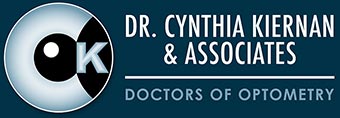
HOME > YOUR VISION
Optimizing Vision at Every Stage of Life
Your eyes continue to develop and change throughout your lifetime, causing corresponding changes in your vision. In the same way that you work to maintain the overall health of the rest of your body, you must take steps to preserve your vision throughout your life. We provide an outline below of what to expect during each visual stage.
Vision Throughout the Years

Infant Visions: Birth to 24 Months of Age
Babies must learn to see, just as they learn to walk and talk. They are not born with the complex visual skills of adults, but rather must gradually develop the critical visual skills life requires. In order for babies’ brains to develop the fine-tuned neurological skills necessary for clear vision and eye coordination, their eyes must be structurally healthy and their vision must be adequately focused. Some infants need glasses to allow their eyes to provide the clear vision the brain needs for proper visual development. Eye health and vision problems in infants can cause developmental delays.

Preschool Vision: 2 – 5 Years of Age
The preschool years are a critical period in vision development. A child’s vision builds on the foundation established during infancy to master the increasingly complex visual skills needed in school and beyond. The ability to focus on near objects and coordinate the eyes efficiently becomes more important. This is also a time when problems with vision can still be corrected relatively easily, an attribute that decreases with time and makes your child’s eye exams even more important. Steps taken during these years to help ensure normal visual development can provide a child with an important head start for school.

School-Aged Vision: 6 – 18 Years of Age
Of the many abilities a child needs to succeed in school, clear vision is among the most important. Experts estimate that as much as 80% of a child’s learning happens through his or her eyes. Clear, efficient vision and balanced eye coordination provide your child with the tools needed to excel in school and beyond. Yearly exams help to identify and correct visual problems before they negatively impact your child’s academic performance.

Adult Vision: 19 – 40 Years of Age
Most adults in this age group enjoy healthy eyes and clear vision. Increasing use of computers and other electronic devices commonly causes visual stress in this group. Most eye health concerns relate to eye injuries rather than disease. Preventative eye exams are still important. However, while uncommon, visual stress can lead to poor performance and eye disease. It is most successfully treated when detected early.

Adult Vision: 41 – 60 Years of Age
If you are over 40 years of age, you’ve probably noticed slight changes in your vision. Most adults between the ages of 41-60 experience blurred vision while reading and performing other near work. This difficulty with seeing clearly up close is among the most common visual problems faced by this age group and is caused by natural structural changes within the eye. Eye disease becomes more prevalent within this group, making yearly preventative eye exams critically important. Learn more about this.

Adult Vision: Over 60 Years of Age
Adults in this age group begin to experience more significant vision changes. Although these changes are undeniable, they don’t have to compromise your lifestyle. Blurred vision at near may worsen but often stabilizes over time and changes to distance vision may require more frequent vision assessments. Eye disease becomes more prevalent in this group, but most conditions can be successfully treated with early detection. Knowing what to expect and when to seek professional care are important steps to safeguarding your vision. You have the power to protect your vision by seeking yearly preventative eye care.

